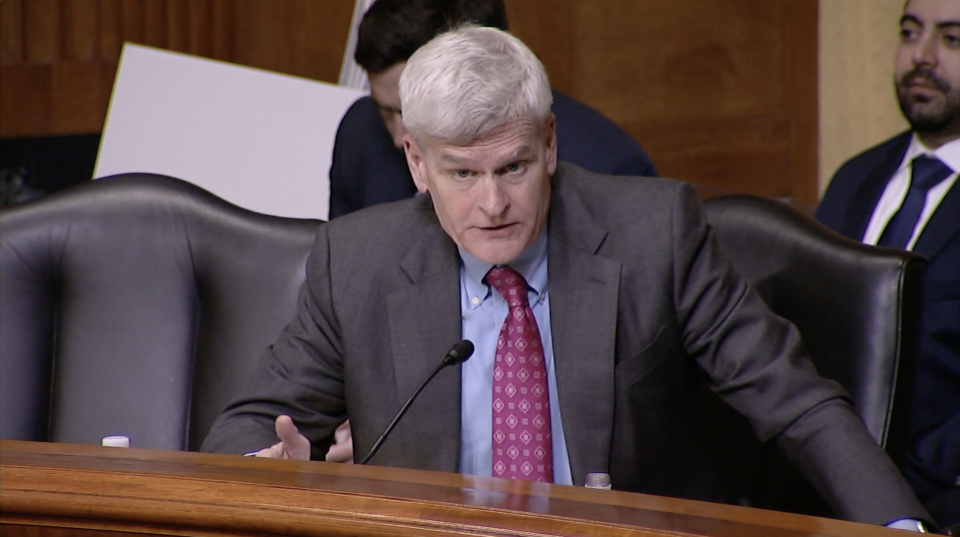Mildred Skidmore
January 29, 2007Children’s Coalition to meet in Houma
January 31, 2007A recent report by the The Road Information Program (TRIP), a national transportation research group based in Washington D.C., graded major roads and highways in Louisiana to be in poor or mediocre conditions. However, local Department of Transportation and Development project engineer Paul Lambert says roads in Terrebonne and Lafourche parishes do not fall into those categories.
“I don’t know if we have any roads that I can really say are sub-par,” said Lambert. “We try to keep up with our roads on a regular basis. We’ve been fortunate in this area. We’ve been treated very well in comparison to the rest of the district. I think we’re finally at a point in Terrebonne and Lafourche, where we’ve gotten most of our real bad roads overlaid.”
The report issued statewide grades on roads (Louisiana received an F), bridges (D-), congestion (C), safety (F) and funding (D). It said that nearly half of Louisiana’s major roads and highways have pavement in poor or mediocre condition. It added that in 2005, 22 percent of Louisiana roads were rated in poor condition and 25 percent were rated in mediocre condition.
According to the report, roads rated in poor condition often have significant rutting, potholes or other visible signs of deterioration, and require resurfacing or reconstruction. Roads rated in mediocre condition show signs of significant wear and may also have some visible pavement distress.
Lambert said there are currently a number of road construction projects under way in Terrebonne and Lafourche parishes. Included are improvements to La. 24, La. 57 and Hwy. 90.
“La. 24 is under construction right now, as we speak,” said Lambert. “They also elevated at the Bayou Gardens crossing, that used to go underwater quite often whenever Bayou Terrebonne would rise. The next project is the small piece of La. 24 on the other side of the Intracoastal, going out toward Howard Avenue. Also, La. 57, that’s going to be overlaid up to Industrial Boulevard.”
Lambert added that it is essential to plan road construction far in advance of when the roads begin to deteriorate, saying the DOTD often plans as much as four years ahead. “It prevents it from where it’s actually a nuisance, or hazard to the public,” he said. “I’ve got stuff on Hwy. 90 that the average person won’t see. I can see it, and I know it’s going to cause trouble two years from now. But it’s not causing trouble right now.”
The TRIP research also revealed that Louisiana’s traffic fatality rate of 2.1 fatalities per 100 million vehicle miles of travel is 40 percent higher than the national average of 1.5. Solutions offered by the report were widening lanes, adding or improving medians, improving intersection designs, paving shoulders and adding rumble strips.
Congestion also factors into road hazards, the report said.
But many in law enforcement argue that the traffic rate is attributable to people, not the roads.
Rodney Hyatt, State Police Troop C public information director, said most accidents in the area are caused by driver carelessness, rather than roadway deficiencies.
“Most of the crashes that are caused are going to be the driver’s fault,” said Hyatt. “A lot of times we’ll find incidences … that may be caused by signage, or a rumble strip … maybe a better tool used to make somebody aware of an upcoming stop sign.”
Hyatt said mathematically, highly traveled areas ususally have more accidents.
“We do have areas of our troop that have a higher incidence of crashes than other areas,” he explained. “That typically deals with areas with the most congestion. For instance, Martin Luther King Boulevard and Hollywood Road. Anytime you have a lot of traffic like that, you’re going to have impatient people. And that’s when you might want to try to beat the light. That’s when you might pull out of that parking lot to hurry.”
Martin Luther King Boulevard is also a concern for the DOTD, Lambert said. “Terrible,” he said, when asked about the thoroughfare. “That’s probably one of your worst areas for congestion, and it’s progressively getting worse.
“Martin Luther King is absolutely going to have to be looked at. There’s going to be probably some type of short-term improvement made to try to minimize the problems using that center turn lane. And I think in the long run, something more involved may have to be done with the whole road system right there. That’s something that needs to be studied. I don’t know what the planning people and the traffic people are inevitably going to come up with.”
Still, Lambert said an overall view of roads in the area is a positive one. “I really think that we’re a step ahead of that research,” he said. “We’re not getting a lot of complaints on our roads.”
He pointed to Coteau Road in Bayou Blue as a prime example of improved roadways. “Coteau Road was two 10-foot lanes. It was very dangerous and had a lot of wrecks,” he said. “Now we have two 11-foot lanes, plus two five-foot shoulders. It’s a lot safer than what it was.”







